I awoke Thursday morning to find a much calmer ocean. We spent the day in a holding pattern off of Cape Nome, waiting for weather conditions to the south to improve. In the afternoon, we tested out deploying some of the equipment: the Van Veen grab, the plankton tow, and the Smith-McIntyre grab. This was a great chance to see what worked and to fix things that didn’t.
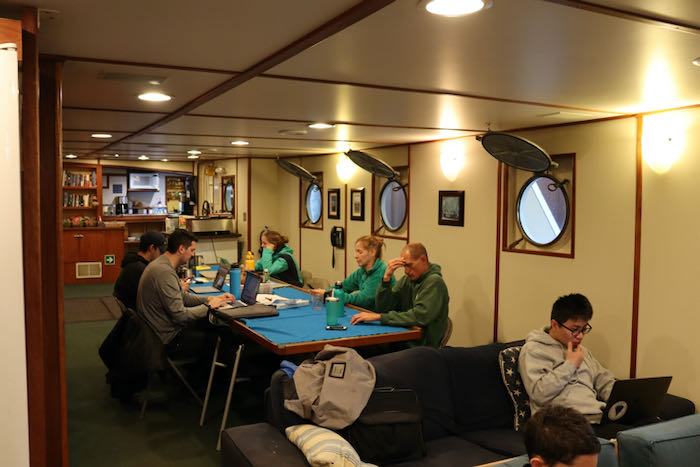
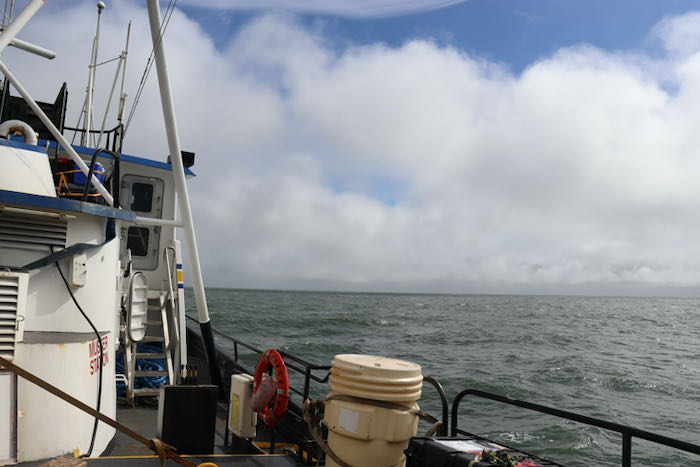
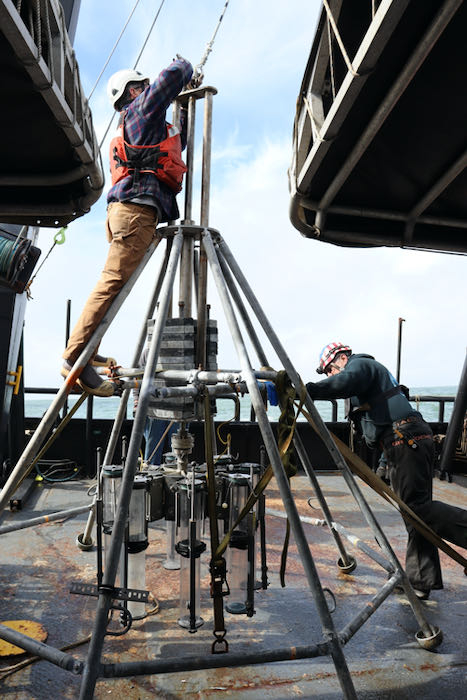
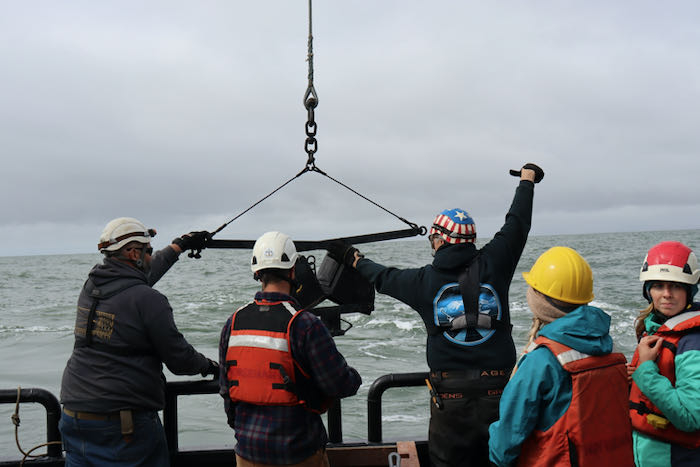
One issue we discovered and fixed had to do with the plankton tow, a net with very fine mesh for catching phytoplankton. We lowered it under the side, expecting it to go straight down to 30 meters below the surface (100 feet). Instead, it floated near the surface and went under the boat. We tried fixing a large shackle to the end of the plankton tow to weigh it down. With this fix, it trailed behind the boat and made it down about 5-6 feet. It still wasn’t what we were hoping for, but it did capture a lot of plankton.
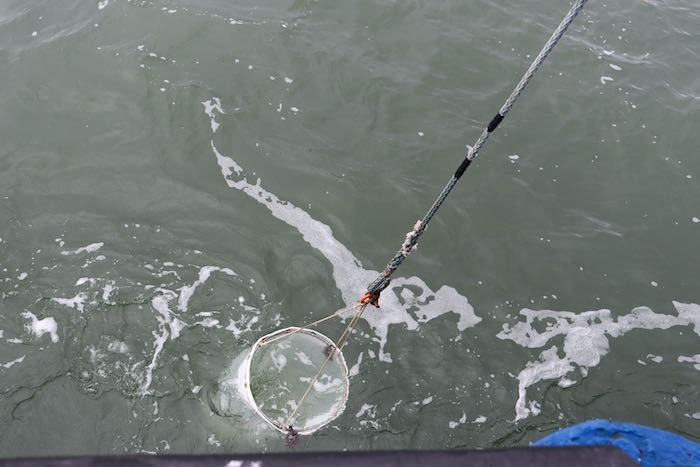
What is a plankton, anyway?
The main purpose of this cruise is to study plankton, so I thought I would take some time to talk about what plankton are and why they are so important.
PlanktonPlankton are small or microscopic organisms that float or drift in fresh or salt water, especially at or near the surface, and serve as food for fish and other larger organisms. are organisms in the ocean that are carried along by the current and cannot swim against it. Some are microscopic, like the Alexandrium we are studying, and some are quite large, like jellyfish.
There are two main categories of plankton: phytoplankton and zooplankton. PhytoplanktonSmall or microscopic aquatic plants that float or drift in fresh or salt water. are plant-like organisms. Like plants, phytoplankton use sunlight to make food in the process of photosynthesis. They are the base of the ocean’s food web and also produce much of the oxygen in the atmosphere. PhytoplanktonSmall or microscopic aquatic plants that float or drift in fresh or salt water. are also known as algae.
ZooplanktonSmall or microscopic aquatic animals that float or drift in fresh or salt water. are animals that cannot swim against the current. These include krill (food for whales), pteropods (food for pink salmon), and jellyfish.
What is a plankton bloom?
When phytoplankton have the right conditions, they can multiply very fast. This is called a “bloom.” When many species bloom, it just means more food and oxygen for other organisms. But when some species bloom it can be hazardous to marine life. Some have spines that damage fish gills. And species such as Alexandrium catenella produce toxins that can poison other organisms.


Comments